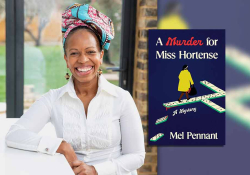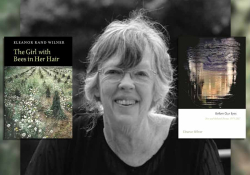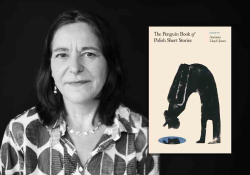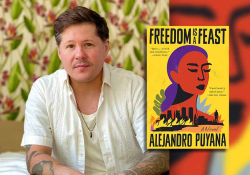Mediating the Power Dynamics between Two Languages: A Conversation with Charlotte Chun-lam Yiu
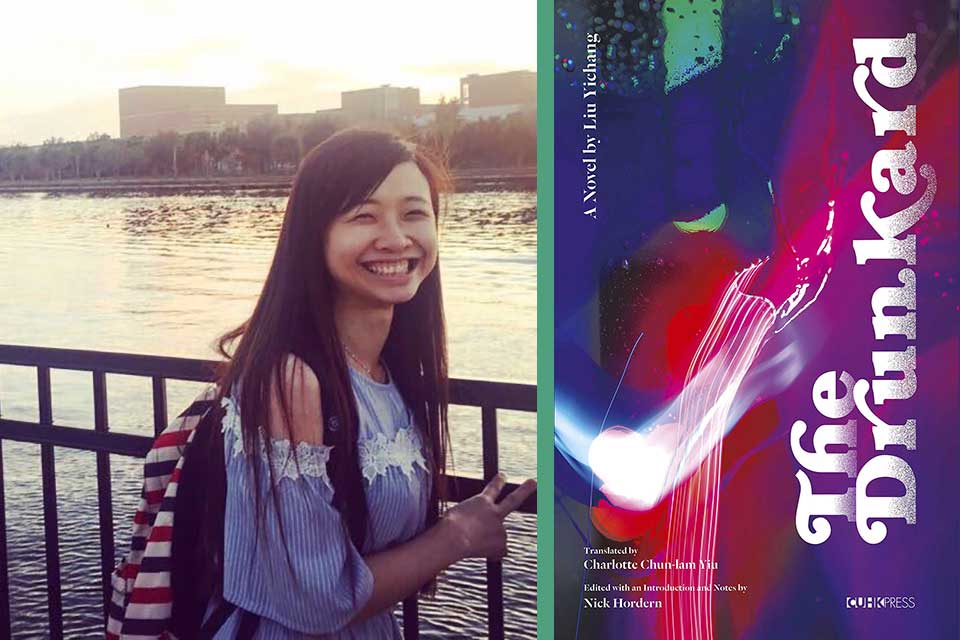
Charlotte Chun-lam Yiu was born in Hong Kong when it was still a British colony. A translator and scholar, she completed her undergraduate and master’s degrees in her hometown before beginning her PhD in Asian languages and cultures at the University of Michigan. This past summer, the Chinese University of Hong Kong Press published Yiu’s translation of Liu Yichang’s The Drunkard (1963), a seminal work of Hong Kong literature sometimes billed as “one of the first full-length stream-of-consciousness novels written in Chinese.” The work influenced not only local writers but also cinematic greats like Wong Kar-wai, leaving a lasting impression on representations of the city’s colonial past. This is the first time an English translation of the work has been published.
Cameron L. White: There are many clichés about Hong Kong, such as that it is a place where “East meets West” or that it is “Asia’s World City” (the latter a slogan even used by the local government). Nonetheless, there is a large degree of truth to them, as Hong Kong enjoys a fair amount of linguistic and cultural diversity compared to other nearby metropolises. Would you say that has any impact on Hong Kong as a site of translation?
Charlotte Chun-lam Yiu: I would say there are both positive and negative impacts. On the positive side, there are always opportunities for translation. Chinese and English are both official languages in Hong Kong, so all official and commercial documents have to be available in both languages. Academically speaking, this bilingualism meant that Hong Kong was one of the earliest places in the world where universities recognized translation as a discipline and department, with curricula appearing at the University of Hong Kong in the 1930s.
However, I think the context of British colonial rule and Chinese imperialism have created problems for translation. Let me give you a very simple example: just now I mentioned how all official and commercial documents would exist in bilingual versions, with a final sentence that seals the deal: “The Chinese version is for reference only. In case of any discrepancy between the English version and the Chinese version, the English version shall prevail.” The message was always very clear: English shall prevail in Hong Kong. Now, after the handover back to China, and given all that has happened in recent years, I suspect that the reverse is occurring. In bilingualism, when two languages are put together, are juxtaposed, what is more likely to happen is that the languages compete with each other, or as scholars like Haroldo de Campos and Else Vieira have argued, translation causes one language to cannibalize the other. So instead of saying, “Hong Kong is a free site where two languages are equal and it’s a great place for translation,” translators have to take deeper concerns into account.
White: At one point in The Drunkard, the narrator reads a short story by a Chinese émigré in England and is immediately excited by its potential, only to eventually suggest that the writer switch to penning works in English for American or British literary journals. That moment says much about structural inequalities between languages in the traffic of world literature that persist even to this day. As a scholar of Chinese literature in the anglophone academy who also translates Chinese works into English, how do you navigate the power dynamic between the two languages?
Yiu: Your question reminds me of a short story by the Moroccan writer Abdelfattah Kilito, “Dog Words.” In it he writes, “When two languages meet, one of them is necessarily linked to animality,” so one language is viewed as more primitive and inferior, very much like what I just mentioned. Now when people talk about world literature, the most basic definition is a literary work that circulates outside of the country of origin, a work that crosses a border. That criterion alone further privileges English, as it is the “global” language, meaning as we export Hong Kong literature, unfortunately we have to rely on English as a medium. It’s just a fact that we have to deal with. That’s why I think translators have to be aware that languages are rarely equally situated.
Translators have to be aware that languages are rarely equally situated.
In the case of The Drunkard, my purpose is very simple: I wanted to preserve and promote what remains Hong Kong’s. With that in mind—preservation and promotion—getting as close to the original as possible and making sure that the work is pleasurable for the reader were equally important. I couldn’t help but follow the linguistic conventions of English in order to make sure of the work’s readability. At the same time, I didn’t always smooth things out, which would sacrifice the peculiarities of the original. The forms of certain chapters may pose problems for the English reader, like having no paragraph breaks or having too many paragraph breaks, the scattering of fragmented thoughts and seemingly unrelated sentences and punctuation, and the frequent use of Cantonese proper names. I don’t flatten these things to make the reader think they are reading an English novel; they are not. It’s a Hong Kong novel. I think keeping these idiosyncrasies was a good strategy to mediate the power dynamics between the two languages.
I don’t flatten these things to make the reader think they are reading an English novel; they are not. It’s a Hong Kong novel.
White: One of the most stunning aspects of the novel is the sheer breadth of cultural allusions, from Faulkner to Mao Dun to Cold War politics. In your translator’s preface, you use the term “hybridity” to describe the quality of Liu’s cross-cultural sensibilities. What challenges did that pose for the translation process?
Yiu: For me, “hybridity” is especially apt considering the colonial rule of Hong Kong, Liu’s mixed cultural identity, and of course all the colonial and postcolonial theory about hybridity. In the case of The Drunkard, Liu’s hybridity is all-dimensional. He could be citing the first five characters of a traditional Chinese-character practice workbooks, like in chapter 4, or T. S. Eliot’s 1919 essay “Tradition and the Individual Talent.” The tricky thing about Liu is that he didn’t always really tell you whether he was citing something or from which sources he cited. When I started to translate the work seven years ago, I locked myself up in a room to work. I still remember basically searching every single word, every single phrase, every single sentence that looked slightly different from the rest of the text, in case he might be citing something there. In the end, I probably ended up googling almost every single word of The Drunkard.
White: Some people have suggested that one of the reasons The Drunkard wasn’t translated into English for a long time was because of the difficulty of the allusions. Would you say that with the rise of Google and similar tools, technology enabled the translation process of this “hybrid” work that much more?
Yiu: Totally. I really couldn’t imagine doing it otherwise. Take the example I just mentioned in chapter 4, where in the very beginning Liu cites from some Chinese-character practice books for kids. It reads as a totally unrelated sentence that makes no sense. I imagine that without the internet, I would not have been able to recognize the passage and arrive at the translation I did. I did not use that Chinese-character practice workbook myself when I was young, but it was something that I could find online. In a similar manner, online forums actually helped a lot as well. For instance, sometimes Liu’s narrator talks about a football player, or maybe a racing jockey, some of whom were westerners, meaning I would need to find the English spelling of their names. I couldn’t find anything in news sources, but when I looked in online forums where people shared memories about old Hong Kong, some would say, “Oh, these were my favorite footballers,” and I could gradually look through them and locate the names.
White: The narrator of The Drunkard repeatedly references The Story of the Stone (also known as Dream of the Red Chamber), arguably the most influential Chinese novel of all time. As a scholar of Ming and Qing literature, what do you make of its presence throughout the novel?
Yiu: It’s funny how different points in my life seem to link together. My MPhil thesis at Hong Kong University was actually on The Story of the Stone, so I am very familiar with the work. Of course, The Story of the Stone, like the works of James Joyce and Marcel Proust, is a masterpiece produced by someone who would go through all difficulties for the sake of literature. But more importantly, the presence of The Story of the Stone in The Drunkard is mostly about its innovativeness, its surpassing conventions. From the preface of The Drunkard and all Liu’s works, it is quite obvious that breaking new ground in literature is the most important thing for Liu Yichang. While we see The Stone as a traditional work today, we know that in its time, the author was making an attempt to make a difference, to reject the conventions of the wave of scholar-beauty novels. That can be compared with Liu’s attempt to produce something different from the dominant martial arts novels in Hong Kong.
Breaking new grounds in literature is the most important thing for Liu Yichang.
White: For readers who might not know what scholar-beauty novels are, do you want to give a basic summary of the genre?
Yiu: They’re a late-imperial Ming–Qing Dynasty genre of what scholars call “vernacular full-length narratives.” They’re always very formulaic in the sense that there is usually a very talented young scholar who meets an equally talented and very beautiful female protagonist, often in a temple or in a garden. When they meet they fall in love, sometimes having premarital sex. Afterward, they face some sort of difficulty; the male scholar maybe would need to go to the capital to take the imperial examinations, and then some bad character would come along and want to marry the female protagonist because she is so beautiful and talented. In the end, the scholar and the beauty usually reunite, sometimes with the scholar obtaining first in the civil service examination, and then they marry, happily ever after. I think there are some fifty titles in existence; they were hugely popular commercial novels at the time.
White: At one point in The Drunkard, the narrator remarks, “Here in Hong Kong, there’s no such thing as real literature.” How would you assess that statement in 2020?
Yiu: I actually disagree with the narrator. Whether it’s in the 1960s or 2020, I think there is real literature in Hong Kong. The narrator’s—and Liu’s—definition of “real literature” is very fixed, something well written with the purpose of breaking new ground, requiring highbrow taste and sophisticated writing techniques. And it’s almost set against popular literature, specifically wuxia xiaoshuo, the martial arts novels that were once so popular among Hong Kong readers. For me, there is no hard line between the two.
Let me give you a simple example. In late imperial China, poetry was much more highly regarded than vernacular full-length narratives. The latter was often seen as something with easier entry and lower taste at the time. But as we reevaluate Chinese literature as a whole today, it’s very obvious that some of the best works in Chinese literature, like The Water Margin and The Plum in the Golden Vase, were initially treated as among this lower category. My idea is that among any form, any genre, and in any era, there are always “good works” and “real literature.”
Among any form, any genre, and in any era, there are always “good works” and “real literature.”
White: In the greater landscape of sinophone literature available to anglophone readers, Hong Kong works have received far less attention than those of mainland China or Taiwan. For readers looking to branch out after The Drunkard, are there any other translated works you recommend?
Yiu: I would say, for novels, Liu Yichang’s Intersections, Leung Ping-kwan’s Paper Cuts, and Hon Lai-chu’s The Kite Family are all excellent works. As for short-story collections, I really love Ng Hui-bin’s The Bisons and Xi Xi’s Marvels of a Floating City as well as A Girl Like Me and Other Stories.
September 2020
Editorial note: WLT’s spring 2019 city issue cover feature was devoted to Hong Kong, guest-edited by Tammy Lai-Ming Ho, with an annotated list of recommended readings by Xu Xi.





